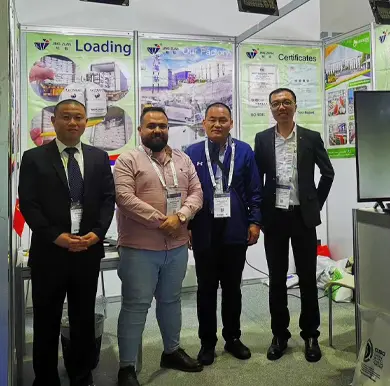
Dec . 05, 2024 07:49 Back to list
RDP Powder Pricing Trends and Market Insights for 2023
Understanding RDP Powder Prices Key Factors and Market Trends
RDP (Redispersible Polymer Powder) has become an essential material in the construction and building industry. Used primarily as a binder in dry-mix mortars, tile adhesives, and other construction applications, its performance characteristics significantly enhance the quality and durability of building materials. As demand increases globally, understanding the pricing dynamics of RDP powder is crucial for manufacturers, suppliers, and end-users.
What is RDP Powder?
Redispersible Polymer Powder is a type of polymer that can be dispersed in water once again after drying. It is produced through the spray-drying of aqueous polymer dispersions. The main advantage of RDP is that it improves the adhesion, flexibility, and water resistance of cement-based materials. Its incorporation into mortar mixes can lead to improved workability and bonding performance, making it a favored choice among construction professionals.
Factors Influencing RDP Powder Prices
1. Raw Material Costs The primary ingredients for producing RDP powder are various polymer emulsions. The prices of these raw materials fluctuate based on global supply and demand dynamics. Therefore, any significant changes in the prices of petrochemicals, natural gas, or other feedstocks directly impact the production costs of RDP powders.
2. Production Technology The manufacturing process of RDP powders involves advanced technology. Companies that invest in cutting-edge production facilities might incur higher costs initially, which could be reflected in the product pricing. Conversely, improvements in technology that streamline production can lead to lower prices over time.
3. Market Demand Construction activities around the world significantly affect RDP powder prices. A booming construction sector, particularly in emerging economies, increases demand for RDP and its derivatives. Consequently, suppliers may raise prices to accommodate higher demand levels. Similarly, during economic downturns or reduced construction activity, prices may fall.
4. Geopolitical Factors Political stability and trade policies in key production regions influence RDP powder prices. For instance, tariffs or trade restrictions on raw materials can lead to increased costs for producers, subsequently raising prices for consumers. Moreover, transportation costs due to geopolitical tensions can further impact pricing strategies.
rdp powder price

5. Environmental Regulations With increasing awareness of environmental issues, many regions are implementing stricter regulations governing chemical production. Compliance with these regulations often requires additional investment from manufacturers. The increased cost of compliance may subsequently lead to higher end-user prices for RDP powder.
Regional Price Variations
RDP powder prices can vary significantly by region due to differences in local production costs, demand levels, and regulatory environments. For example, in regions with rapidly expanding construction projects, such as Asia-Pacific, prices might be higher due to increased demand. On the other hand, in areas with mature markets and established supply chains, competition may drive prices down, benefiting consumers.
Future Trends
Looking forward, several trends are poised to influence RDP powder prices. Firstly, the construction industry's shift towards sustainability and eco-friendly materials may lead to increased demand for RDP products with lower environmental footprints. This shift could create new pricing structures as manufacturers invest in greener production technologies.
Secondly, advancements in production methodologies could reduce costs and lead to a wider availability of RDP powders, potentially stabilizing prices. Innovations that improve the efficiency of polymer production and reduce waste are likely to be crucial in this regard.
Lastly, the global economic outlook will play a significant role. Economic recovery in various regions post-pandemic should spur construction activity, likely increasing demand and prices. However, inflationary pressures and material shortages may counterbalance this trend, leading to fluctuations in RDP powder pricing.
Conclusion
The pricing of RDP powder is influenced by a myriad of factors, from raw material costs and manufacturing processes to market demand and geopolitical issues. Understanding these dynamics is imperative for stakeholders involved in the construction sector to make informed procurement decisions. As the industry evolves, staying updated on market trends will be essential to navigate the complexities of RDP powder prices effectively. In this constantly changing landscape, continuous research and adaptation will be key to ensuring the best results for construction projects worldwide.
-
Versatile Hpmc Uses in Different Industries
NewsJun.19,2025
-
Redispersible Powder's Role in Enhancing Durability of Construction Products
NewsJun.19,2025
-
Hydroxyethyl Cellulose Applications Driving Green Industrial Processes
NewsJun.19,2025
-
Exploring Different Redispersible Polymer Powder
NewsJun.19,2025
-
Choosing the Right Mortar Bonding Agent
NewsJun.19,2025
-
Applications and Significance of China Hpmc in Modern Industries
NewsJun.19,2025







